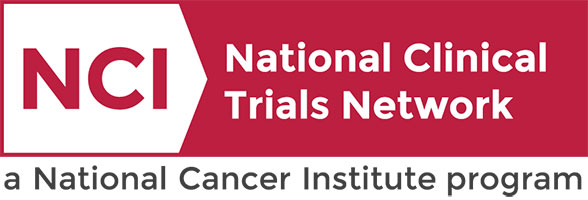Patient Search
 |
 |
|
KaCrole Higgins was diagnosed with breast cancer in 2020. “In May 2020, I found a lump in my breast. I cried. By June, it was diagnosed as breast cancer, triple positive, stage 1A. While getting this cancer diagnosis was devastating, it also became an opportunity. Suddenly, the cancer gave me clarity. It gave me clarity about what was important, what was good in my life, what was toxic in my life, and what I needed to do.” Click below to read more of KaCrole’s story |
If Landon Ryan had been diagnosed with bilateral retinoblastoma 10, 20 or 30 years ago, she might not be here today with nearly perfect vision.Thanks to recent improvements in the treatment for this rare form of cancer that almost exclusively affects children under the age of 5, the diagnosis had the power to change Landon’s life when she was 11 months old, but not to take it — or her eyesight. Click below to learn more about Landon and her story. https://momentum.vicc.org/2022/04/brighter-outlook/ |
A Study to Evaluate the Safety, Tolerability of INCB160058 in Participants With Myeloproliferative Neoplasms
This study is being conducted to assess the Safety, Tolerability, and Pharmacokinetics of INCB160058 in Participants With Myeloproliferative Neoplasms.
Not Available
I
Kishtagari, Ashwin
NCT06313593
VICC-DTHEM24055P
Testing the Role of DNA Released From Tumor Cells Into the Blood in Guiding the Use of Immunotherapy After Surgical Removal of the Bladder, Kidney, Ureter, and Urethra for Urothelial Cancer Treatment, MODERN Study
This phase II/III trial examines whether patients who have undergone surgical removal of bladder, kidney, ureter or urethra, but require an additional treatment called immunotherapy to help prevent their urinary tract (urothelial) cancer from coming back, can be identified by a blood test. Many types of tumors tend to lose cells or release different types of cellular products including their DNA which is referred to as circulating tumor DNA (ctDNA) into the bloodstream before changes can be seen on scans. Health care providers can measure the level of ctDNA in blood or other bodily fluids to determine which patients are at higher risk for disease progression or relapse. In this study, a blood test is used to measure ctDNA and see if there is still cancer somewhere in the body after surgery and if giving a treatment will help eliminate the cancer. Immunotherapy with monoclonal antibodies, such as nivolumab and relatlimab, can help the body's immune system to attack the cancer, and can interfere with the ability of tumor cells to grow and spread. This trial may help doctors determine if ctDNA measurement in blood can better identify patients that need additional treatment, if treatment with nivolumab prolongs patients' life and whether the additional immunotherapy treatment with relatlimab extends time without disease progression or prolongs life of urothelial cancer patients who have undergone surgical removal of their bladder, kidney, ureter or urethra.
Not Available
II/III
Tan, Alan
NCT05987241
ALLUROA032103
Neoadjuvant Neratinib in Stage I-III HER2-Mutated Lobular Breast Cancers
This phase II trial tests how well neratinib prior to the primary treatment (neoadjuvant) works in treating patients with stage I-III HER2 mutated lobular breast cancers. Neratinib is in a class of medications called kinase inhibitors. It works by blocking the action of an abnormal protein that signals cancer cells to multiply. This helps slow or stop the spread of cancer cells. Giving neratinib in addition to normal therapy may work better in treating cancer than the endocrine therapy patients would normally receive.
Not Available
II
Not Available
NCT05919108
VICC-NCBRE23172
Testing the Addition of Total Ablative Therapy to Usual Systemic Therapy Treatment for Limited Metastatic Colorectal Cancer, The ERASur Study
This phase III trial compares total ablative therapy and usual systemic therapy to usual systemic therapy alone in treating patients with colorectal cancer that has spread to up to 4 body sites (limited metastatic). The usual approach for patients who are not participating in a study is treatment with intravenous (IV) (through a vein) and/or oral medications (systemic therapy) to help stop the cancer sites from getting larger and the spread of the cancer to additional body sites. Ablative means that the intention of the local treatment is to eliminate the cancer at that metastatic site. The ablative local therapy will consist of very focused, intensive radiotherapy called stereotactic ablative radiotherapy (SABR) with or without surgical resection and/or microwave ablation, which is a procedure where a needle is temporarily inserted in the tumor and heat is used to destroy the cancer cells. SABR, surgical resection, and microwave ablation have been tested for safety, but it is not scientifically proven that the addition of these treatments are beneficial for your stage of cancer. The addition of ablative local therapy to all known metastatic sites to the usual approach of systemic therapy could shrink or remove the tumor(s) or prevent the tumor(s) from returning.
Not Available
III
Not Available
NCT05673148
VICC-NTGIT23268
A Study With Tovorafenib (DAY101) as a Treatment Option for Progressive, Relapsed, or Refractory Langerhans Cell Histiocytosis
This phase II trial tests the safety, side effects, best dose and activity of tovorafenib (DAY101) in treating patients with Langerhans cell histiocytosis that is growing, spreading, or getting worse (progressive), has come back (relapsed) after previous treatment, or does not respond to therapy (refractory). Langerhans cell histiocytosis is a type of disease that occurs when the body makes too many immature Langerhans cells (a type of white blood cell). When these cells build up, they can form tumors in certain tissues and organs including bones, skin, lungs and pituitary gland and can damage them. This tumor is more common in children and young adults. DAY101 may stop the growth of cancer cells by blocking some of the enzymes needed for cell growth. Using DAY101 may be effective in treating patients with relapsed or refractory Langerhans cell histiocytosis.
Not Available
II
Not Available
NCT05828069
VICC-NTPED24012
TPIV100 and Sargramostim for the Treatment of HER2 Positive, Stage II-III Breast Cancer in Patients With Residual Disease After Chemotherapy and Surgery
This phase II trial studies how well TPIV100 and sargramostim work in treating patients with HER2 positive, stage II-III breast cancer that has residual disease after chemotherapy prior to surgery. It also studies why some HER2 positive breast cancer patients respond better to chemotherapy in combination with trastuzumab and pertuzumab. TPIV100 is a type of vaccine made from HER2 peptide that may help the body build an effective immune response to kill tumor cells that express HER2. Sargramostim increases the number of white blood cells in the body following chemotherapy for certain types of cancer and is used to alert the immune system. It is not yet known if TPIV100 and sargramostim will work better in treating patients with HER2 positive, stage II-III breast cancer.
Not Available
II
Not Available
NCT04197687
VICCBRE2241
A Global Study of Volrustomig (MEDI5752) for Participants With Unresected Locally Advanced Head and Neck Squamous Cell Carcinoma Following Definitive Concurrent Chemoradiotherapy
The main purpose of this study is to assess the efficacy and safety of volrustomig compared to observation in participants with unresected locally advanced head and neck squamous cell carcinoma (LA-HNSCC) who have not progressed after receiving definitive concurrent chemoradiotherapy (cCRT).
Not Available
III
Choe, Jennifer
NCT06129864
VICC-DTHAN24071
An Open-label Study Comparing Lutetium (177Lu) Vipivotide Tetraxetan Versus Observation in PSMA Positive OMPC.
The purpose of this study is to evaluate the efficacy and safety of lutetium (177Lu) vipivotide tetraxetan (AAA617) in participants with oligometastatic prostate cancer (OMPC) progressing after definitive therapy to their primary tumor. The data generated from this study will provide evidence for the treatment of AAA617 in early-stage prostate cancer patients to control recurrent tumor from progressing to fatal metastatic disease while preserving quality of life by delaying treatment with androgen deprivation therapy (ADT).
Not Available
III
Schaffer, Kerry
NCT05939414
VICC-DTURO23342
pBI-11 & TA-HPV (With Pembrolizumab as Treatment for Patients w/Advanced, PD-L1 CPS1, hrHPV+ Oropharyngeal Cancer
This phase II trial tests how well pB1-11 and human papillomavirus tumor antigen (TA-HPV) vaccines in combination with pembrolizumab work in treating patients with oropharyngeal cancer that has come back (recurrent) or that has spread from where it first started (primary site) to other places in the body (metastatic) and that is PD-L1 and human papillomavirus (HPV) positive. Oropharyngeal cancer is a type of head and neck cancer involving structures in the back of the throat (the oropharynx), such as the non-bony back roof of the mouth (soft palate), sides and back wall of the throat, tonsils, and back third of the tongue. Scientists have found that some strains or types of a virus called HPV can cause oropharyngeal cancer. pBI-11 is a circular deoxyribonucleic acid (DNA) (plasmid) vaccine that promotes antibody, cytotoxic T cell, and protective immune responses. TA-HPV is an investigational recombinant vaccina virus derived from a strain of the vaccina virus which was widely used for smallpox vaccination. Vaccination with this TA-HPV vaccine may stimulate the immune system to mount a cytotoxic T cell response against tumor cells positive for HPV, resulting in decreased tumor growth. Immunotherapy with monoclonal antibodies, such as pembrolizumab, may help the body's immune system attack the cancer, and may interfere with the ability of tumor cells to grow and spread by inhibiting the PD-1 receptor. These investigational vaccines could cause or enhance an immune response in the body against HPV, during which time the activity of pembrolizumab against oropharyngeal cancer associated with HPV may be strengthened. These drugs in combination may be more effective in increasing the ability of the immune system to fight oropharyngeal cancer than pembrolizumab alone.
Not Available
II
Not Available
NCT05799144
VICCHN2208
Dinutuximab With Chemotherapy, Surgery and Stem Cell Transplantation for the Treatment of Children With Newly Diagnosed High Risk Neuroblastoma
This phase III trial tests how well the addition of dinutuximab to Induction chemotherapy along with standard of care surgical resection of the primary tumor, radiation, stem cell transplantation, and immunotherapy works for treating children with newly diagnosed high-risk neuroblastoma. Dinutuximab is a monoclonal antibody that binds to a molecule called GD2, which is found on the surface of neuroblastoma cells, but is not present on many healthy or normal cells in the body. When dinutuximab binds to the neuroblastoma cells, it helps signal the immune system to kill the tumor cells. This helps the cells of the immune system kill the cancer cells, this is a type of immunotherapy. When chemotherapy and immunotherapy are given together, during the same treatment cycle, it is called chemoimmunotherapy. This clinical trial randomly assigns patients to receive either standard chemotherapy and surgery or chemoimmunotherapy (chemotherapy plus dinutuximab) and surgery during Induction therapy. Chemotherapy drugs administered during Induction include, cyclophosphamide, topotecan, cisplatin, etoposide, vincristine, and doxorubicin. These drugs work in different ways to stop the growth of cancer cells, either by killing the cells, by stopping them from dividing or by stopping them from spreading. Upon completion of 5 cycles of Induction therapy, a disease evaluation is completed to determine how well the treatment worked. If the tumor responds to therapy, patients receive a tandem transplantation with stem cell rescue. If the tumor has little improvement or worsens, patients receive chemoimmunotherapy on Extended Induction. During Extended Induction, dinutuximab is given with irinotecan, temozolomide. Patients with a good response to therapy move on to Consolidation therapy, when very high doses of chemotherapy are given at two separate points to kill any remaining cancer cells. Following, transplant, radiation therapy is given to the site where the cancer originated (primary site) and to any other areas that are still active at the end of Induction. The final stage of therapy is Post-Consolidation. During Post-Consolidation, dinutuximab is given with isotretinoin, with the goal of maintaining the response achieved with the previous therapy. Adding dinutuximab to Induction chemotherapy along with standard of care surgical resection of the primary tumor, radiation, stem cell transplantation, and immunotherapy may be better at treating children with newly diagnosed high-risk neuroblastoma.
Not Available
III
Benedetti, Daniel
NCT06172296
VICC-NTPED24104


